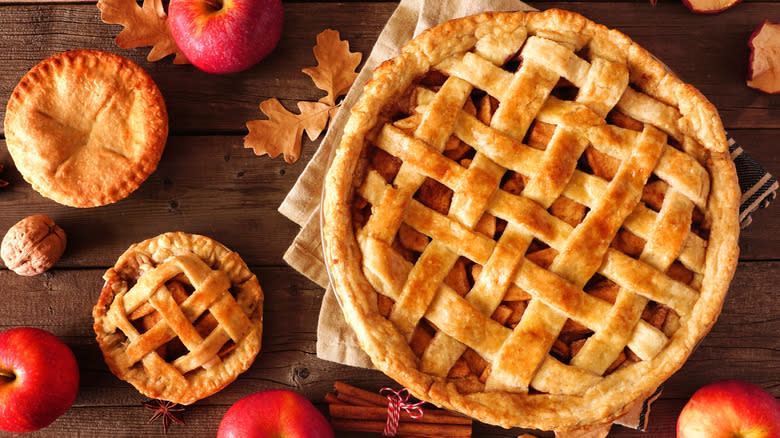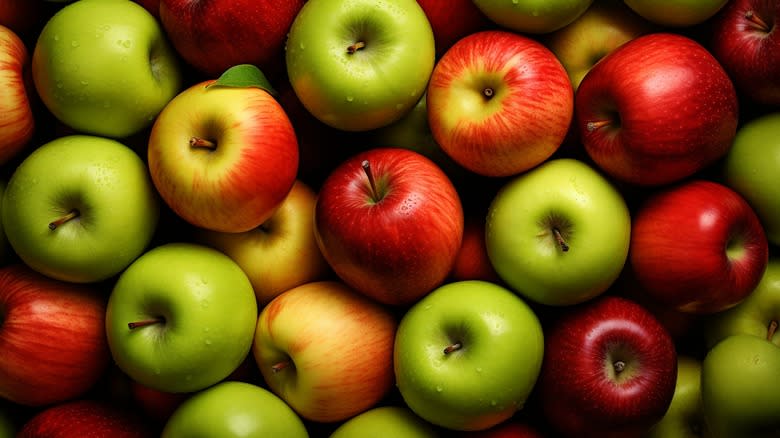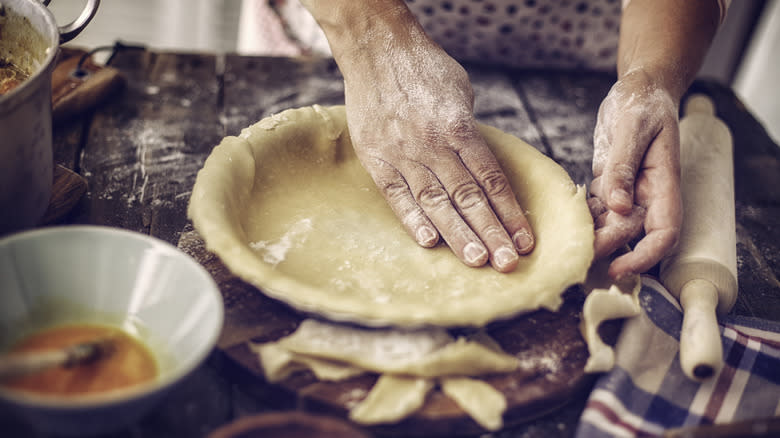Marlborough Pie Walked So Apple Pie Could Run

Think of a celebrity who was once the brightest shiny star back in the day, a true testament to the American dream, but if mentioned today, the response would be: "Who?" If celebrities were desserts, that person would be the Marlborough pie. It was a popular dessert in colonial times on the East Coast in the United States, especially in New England. And it was made of apples that had started going bad that were stewed and softened and mixed with custard, sherry, and spices such as cinnamon and nutmeg. It was served as a single-crust pie or with no crust at all, the latter could also be called a Marlborough pudding.
This pie was a staple during the winter holidays and was similar to the classic apple pie. The recipe is in the first known cookbook written by an American: "American Cookery," by Amelia Simmons, published in 1796. In the same book, there's also an apple pie recipe that requires stewed apples, which is very similar to the way the Marlborough pie is prepared. Even though both recipes require apples as their main ingredient, the pies have a few differences, the main ones being the ingredients and preparation process, but also the fact that the Marlborough pie was forgotten or, at the very least, became a lot less popular, and the amazing apple pie became an American staple that stood the test of time.
Read more: 12 Vegetables And Fruits That Used To Look Very Different
The History Of The Marlborough Pie

It seems the pie recipe came with English colonists to the United States and is of British origins, dating back to the 1600s. It's not clear why it's named the Marlborough pie, but the New England Historical Society believes that it could possibly be related to either the town of Marlborough or the village of Marlborough in Devon, both located in England. There's even the possibility that it could be named after English monk Thomas of Marlborough or English General John Churchill, 1st Duke of Marlborough.
It's likely that the pie became popular in the United States because of the English cookbooks that were sold in the American colonies that included the recipe of the Marlborough pie. This pie is sometimes also referred to as a Deerfield pie or Deerfield Marlborough pie, which is a similar recipe to the original Marlborough pie but involves more apples and excludes nutmeg from the ingredient list. The abundance of apples in the U.S. is also probably one of the reasons why both Marlborough pie and apple pie gained popularity and were a homemade staple, especially during holidays like Thanksgiving, Christmas, and New Year's Eve.
Why Was The Marlborough Pie Forgotten?

The Marlborough pie lost its popularity in the 1800s, when it stopped being included in cookbooks in the U.S. The reason why it was forgotten isn't exactly clear, but there are some speculations. The main one is that, after the Declaration of Independence, the American people started cutting ties with England, and that included traditional English food and recipes, too. And since the Marlborough pie is essentially British, it became something the American people weren't probably that interested in preparing at a time when they were trying to embrace American culture.
There's also the possibility that since people gained more knowledge on how to store fruits and vegetables, there wasn't the necessity to bake a pie that was used at times to avoid waste by adding nearly rotten apples to the baking process. Since the Marlborough pie included sherry in the ingredient list, another possible reason for the disappearance is the temperance movement, which restrained the consumption of alcohol. Whatever the reason, its decline made way for the rise of the all-American apple pie that graces most every Thanksgiving table.
Read the original article on Daily Meal.

